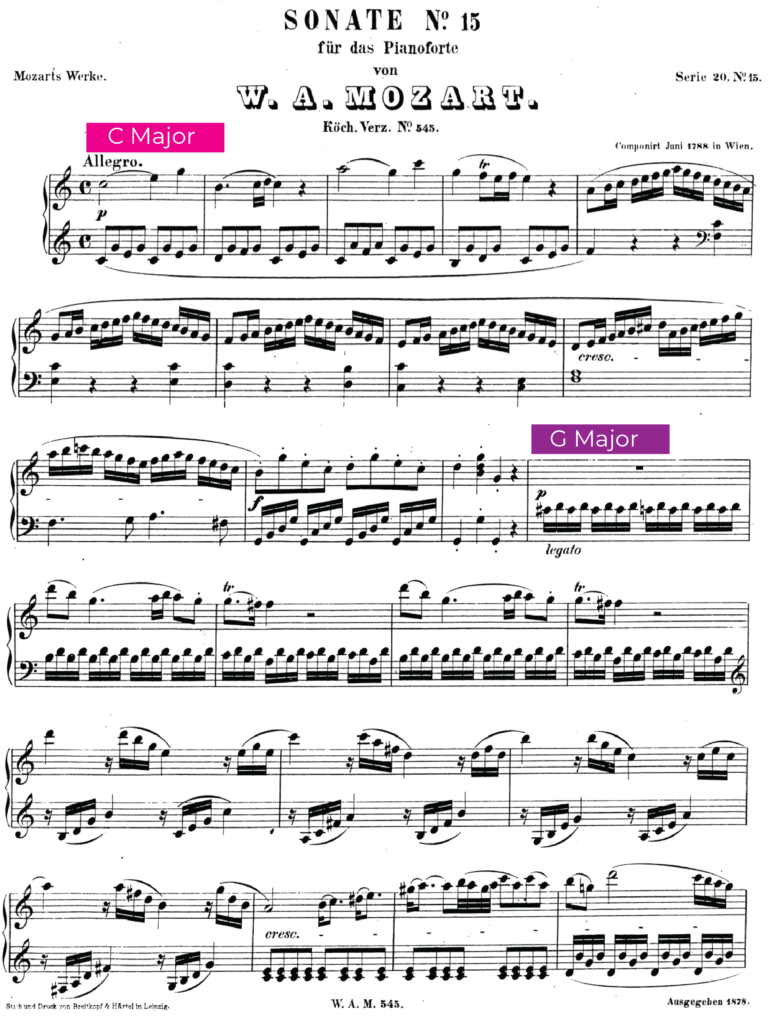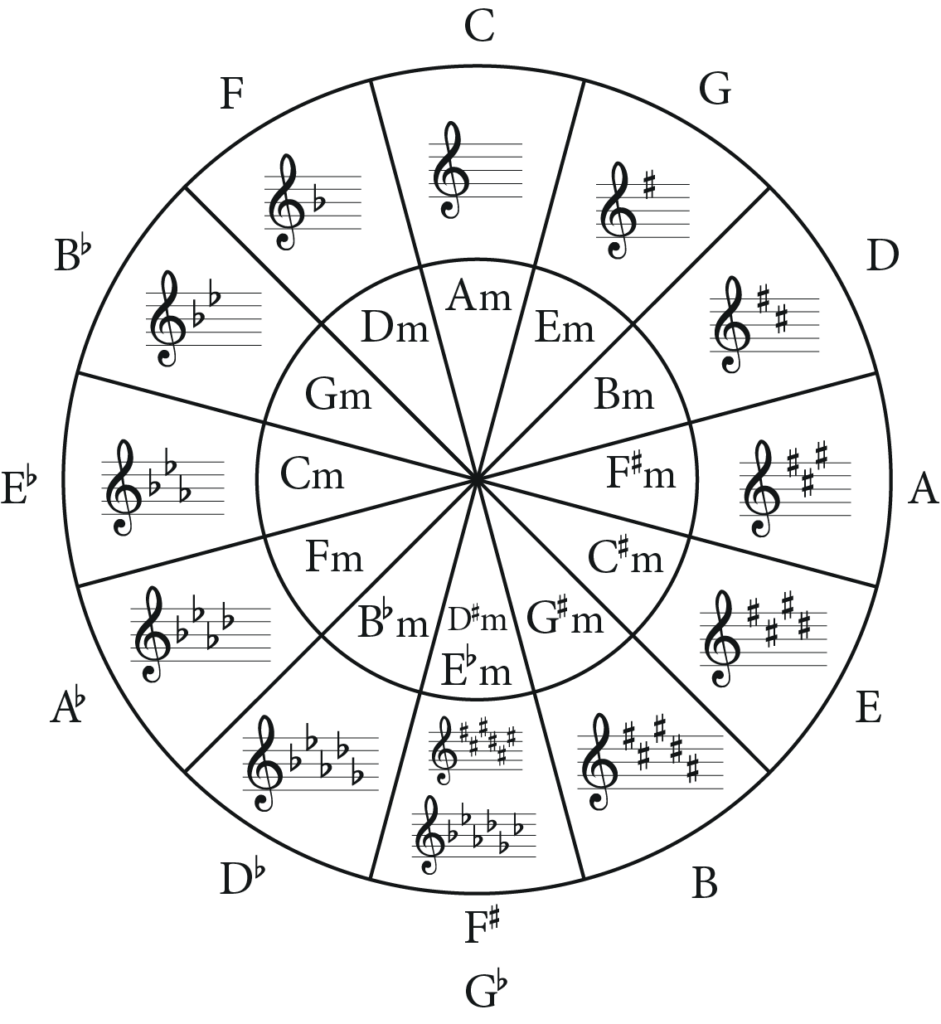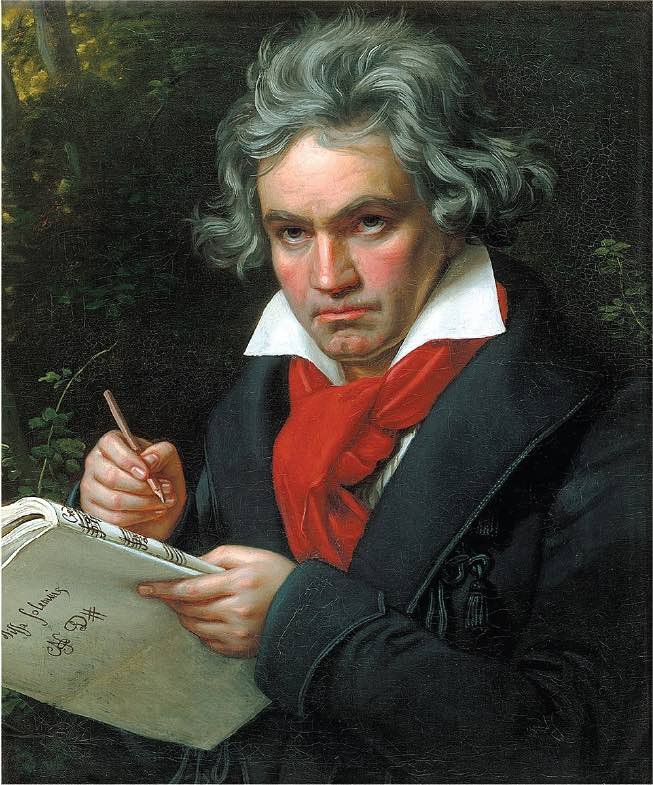The sonata form is an extremely important feature of western classical music theory and you will often see it in musical analysis. Not only does it form things such as piano sonatas, the trio sonata but it also can form an entire movement within symphonies, concertos, string quartets and more. If you have ever played a piece by Haydn, Beethoven or Mozart, chances are, that you will have played a piece in sonata form.
The first movement of symphonies and concertos by these composers are most commonly written in sonata form. Sonata form is also sometimes referred to as first movement form for this reason, because it is most commonly seen in the first movement!
You may also see sonata form called sonata allegro form as it is often played at an allegro speed. Sonata form is a musical structure generally associated with the first movement of classical instrumental music.

Note that although sonata form can be referred to as first movement form it does not always occur in the first movement of a piece of music. Similarly, sonata allegro form is also quite misleading as the tempo does not have to be allegro (fast). Although both of these are common features!
Where did Sonata Form originate?
Sonata Form and particularly sonata form movements written by Haydn, Mozart and Beethoven began to be used during a period of political and social unrest. There were two key changes that happened after the baroque period leading into the classical period. The first was the simplification of textures and the second was the huge growth of amateur musicians. These amateur musicians needed simpler music to play and the growth of public concerts also meant a move to more simple music and a larger focus on emotions.
These changes gave composers a greater sense of freedom when writing their compositions and this can be seen in the emotional and dramatic music of classical composers such as Haydn, Mozart and Beethoven.
Sonata form allowed for added drama within pieces rather than the more basic forms of music in earlier periods.
The structure and function of sonata form
Sonata form is a form that has three sections: the exposition, development and recapitulation. These three sections explore a central theme or motif. The term sonata has meant many different things throughout history, but sonata form is a different thing entirely as it refers to the structure of a movement within a musical work.
When you first think about sonata form you may think that its musical form is linked to ternary form as like ternary form, sonata form has three parts. Ternary form does have a three part structure, ABA. A theme, a contrasting section and then finally a repeat of the theme. The parts of a piece in ternary form are linked by the contrast that they make. Sonata form is different, and is actually mostly linked to binary form, a two part form AB.
Binary form, unlike ternary form, is not only linked by the contrast each section has to each other. Binary form is also linked by the relationship between tonalities, keys, notes and chords.

3 Sections of Sonata Form
What are the 3 sections within sonata form?
The three different sections are the exposition section, the development section and the recapitulation section.
In sonata form, the exposition corresponds to the first section of binary form. The development and the recapitulation correspond to the second section of binary form.
The three sections of this classical form work together as follows:
Exposition – presentation of the main thematic material
- First Subject Group – Tonic key
- Second Subject Group – Dominant key
If the first group is in a major key, the second group is usually in the dominant key. If the first group is in a minor key, the second group will usually be in the relative major.
Development section – development of the thematic material
- Exploration of related keys
Recapitulation section – Recap of original musical material
- First Subject group – tonic key
- Second Subject group – tonic key
Below you can see an example of how the three different sections work together.

Exposition section
The sonata form exposition section, although closely related to the first section of binary form, does have some differences. Within binary form, the principle focus is on continuity rather than contrast whereas the exposition section has a bit focus on contrast.
In the exposition section of the sonata form, the composer lays out the thematic material, the principal musical themes. These themes will initially be played in the tonic key of the piece. The exposition section will typically have two themes. The primary theme will be in the tonic key and the second theme will typically be in either the dominant key if the first theme is in a major key or the relative major key if the primary theme is in a minor key.
For example, for a piece written in C major, the principle theme will be presented in C major. From this initial playing, the exposition section will then modulate. If the piece is in a major key, it will modulate to the dominant key. In the case of C major, the dominant key will be G major.

As we saw, if the piece is in a minor key, it will modulate first to the relative major. In the case of A minor, the relative major key will be C major.

Between the primary theme and the second theme, there will often be a transition section but not always. This transition section will act as a harmonic catalyst to lead into the new key. You will then also see the use of a perfect authentic cadence (V-I) to confirm the new key.
The second theme will often use many of the same ideas from the primary theme but you may find that they are more embellished with ornamentation or different rhythms.
The exposition section will then commonly end with a codetta.
The four sections of the exposition in typical sonata forms
To be clear, the four parts of a typical exposition section in sonata forms will be as follows:
- The first subject group
- The transition
- The second subject group
- The codetta
A sonata form movement may also start with an introduction but it does not have to. Above is the most common presentation of the exposition movement form.

The development section
The development section does what it says on the tin! We develop the thematic material from the first section, cycling through different keys and different variations. This section will typically start with the key that the exposition section finished with. Within this section you can expect anything!
The development section will often restate the thematic material from the exposition but this time these themes will be developed. Composers will use many different compositional techniques to develop these themes such as sequences, fragmentation, variations, different harmonic rhythms etc. This is the time where a composer can really make the musical composition their own!
In baroque era and classical era the development section is relatively short. In the romantic era, the development section can be much longer. It will feature much longer explorations with the addition of many new musical ideas.
To see this in practice, compare the first movement of Beethoven’s symphony no.3 Eroica with the first movement of Mozarts Symphony no.40.
A traditional development section will end with a re transition , where the music hangs on a dominant seventh chord for some time, to prepare the ear to return to the home/tonic key.
The recapitulation section
The recapitulation is the final section within sonata form. The recapitulation section is literally a recap of the main themes from the exposition material. It can also usually feature a a short transition subsection that is sometimes called a secondary development. Eventually, the themes resolve in a perfect authentic cadence in the home key.
The recapitulation section makes use of the two themes that we saw in the exposition but this time they are all in the tonic key.
We begin this section with the first subject group which is the home key. We then often have a transition section which can act as a secondary development section. This transition section can often add new material that was not in the exposition.
We then finish the recapitulation with the second subject group, which rather than modulating, stays in the home key.
Sometimes you may find that if the piece is in a minor key, it will finish in the parallel major to give the piece a slightly happier ending.

The recapitulation is technically the end of typical sonata structure. However, these three sections are sometimes prefaced with an overture section and followed by a coda section.
The coda section is typically eight bars in length and will stay within the home key. It will then finish with another perfect authentic cadence to finish the piece.
Example of Sonata form
A great example of sonata form is Haydn’s Sonata in G major.
Variations on the typical Sonata Form
What we have seen above is the typical sonata form. However, composers often like to put their own spin on this!
Same theme
You may see an exposition that keeps the same theme for both the first and second subject groups. This will be called a monothematic exposition. Literally one theme all the way through. Composers sometimes like to do this to establish a strong connection between the two themes. So although the thematic material will stay the same, we will still modulate.
You can hear an example of this in Mozart’s sonata in B flat major.
Modulating to a different key
Another variation on this is where the second theme modulates to a different key that is not the dominant or relative major. Beethoven will do this often!
You may see the second subject modulate to the mediant, submediant or even the parallel major or minor key.
You can see this in Beethoven’s Sonata No.21 in C major. The first theme of this Beethoven sonata is in C major, but it then modulates to the mediant key of E major.
More than two key areas
We can also sometimes see an exposition that has more than two key areas. Or we may see an exposition that stays in the same key and does not modulate at all.
The sonata form is perhaps the most typical musical form in classical music. You will often learn about the sonata form at school as it can be seen in so many musical works.
Want to Learn More About Music?
If you would like to learn more about music theory then check out some of our other blog posts.
- Learn about the classical music period
- Learn about the romantic music period



